Diets containing 31, 37 and 43 percent crude protein gave the best results
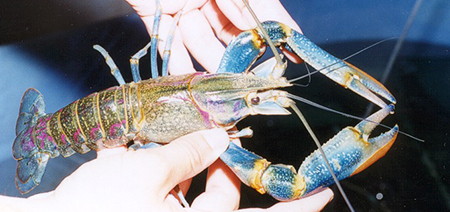
The redclaw (Cherax quadricarinatus) is an Australian freshwater crayfish that was introduced to Mexico in the 1990s. It is commercially produced mainly in the northeast region of the country using aquafeeds formulated for fish, penaeid shrimp, and freshwater prawns.
Redclaw production has been limited, averaging about 15 tons per year in 1999 to 2000. An important limitation to industry expansion has been the lack of appropriate information on redclaw nutrient and feeding requirements, and feeding practices.
To help address this problem, a feeding trial was conducted at the Nutrition Laboratory of the Center for Biological Investigation of the Northwest (Centro de Investigaciones Biológicas del Noroeste, CIBNOR) in La Paz, Baja California Sur, Mexico to evaluate the effect of feed protein level on the growth, feed conversion, survival, and biomass of juvenile redclaws.
Experimental diets
To develop a balanced diet, it is necessary to establish the minimum dietary protein level that will provide the required essential amino acids for the targeted species. In the case of redclaws, developmental stages must also be considered.
At CIBNOR, the authors tested seven diets containing different protein levels: 20, 25, 31, 37, 43, 49 and 55 percent crude protein.
Formulation and preparation
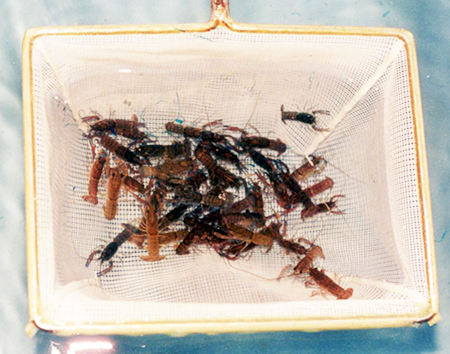
The formulations of the diets were defined by the digestibility of the ingredients as evaluated for the crayfish species C. destructor and C. quadricarinatus. Major ingredients included sorghum and soybean meals, with added protein primarily in the form of sardine meal.
Each diet was prepared by mixing all macro- and microingredients (vitamin premix, mineral premix, choline chloride and calcium carbonate) in a food mixer. Fish oil and soy lecithin were homogenized and added to the mixture, along with sufficient water to provide 30 percent of ingredient weight.
Pelleting and analysis
The dough mixture was passed through a meat grinder to make 2-mm pellets, which were then dried in an air flux oven at 40 degrees-C for eight hours. Proximate analyses of ingredients and diets were made in triplicate following American Organization of Analytical Chemists (1995) methods.
Trial setup
Each of the 21 units in the experimental system had a capacity of 1,500 liters. Crayfish habitat was provided by weighted bundles of an open-weave, synthetic mesh placed in each tank.
Stocking
Treatments were tested in triplicate, using juvenile redclaws (1.08 ± 0.34 g) selected from a production pond at CIBNOR. Juveniles were stocked at a density of 20 animals per square meter (60 animals per unit).
Feeding
Animals were fed to apparent satiation twice a day over 60 days. Measurements were made every two weeks to evaluate animal growth.
Water quality
Water quality parameters were monitored daily during the feeding trail. Photoperiod was natural, with water temperature maintained at 27 ± 1 degrees-C. Dissolved oxygen levels were kept above 5 milligram per liter.
Results
As shown in Table 1, the diets containing 31, 37, and 43 percent crude protein gave the best results in terms of growth, biomass and survival. Estimates of protein requirement, obtained by fitting dose-response data to a quadratic model, indicated an optimal protein level for maximum growth of 34 percent for juvenile redclaws.
Cortes, Growth response and feed utilization of juvenile redclaws, Table 1
| Diet | Survival (%) | Final Weight (g) | Biomass (g/m2) | Feed-Conversion Ratio |
|---|---|---|---|---|
| 20% crude protein | 65.0 | 8.09 | 105.2 | 1.39 |
| 25% crude protein | 78.9 | 8.60 | 128.8 | 1.26 |
| 31% crude protein | 80.0 | 9.60 | 153.6 | 1.04 |
| 37% crude protein | 85.6 | 9.14 | 156.6 | 1.06 |
| 43% crude protein | 85.0 | 9.19 | 156.3 | 1.07 |
| 49% crude protein | 86.1 | 7.61 | 131.2 | 1.31 |
| 55% crude protein | 87.8 | 6.43 | 112.7 | 1.56 |
(Editor’s Note: This article was originally published in the April 2002 print edition of the Global Aquaculture Advocate.)
Now that you've reached the end of the article ...
… please consider supporting GSA’s mission to advance responsible seafood practices through education, advocacy and third-party assurances. The Advocate aims to document the evolution of responsible seafood practices and share the expansive knowledge of our vast network of contributors.
By becoming a Global Seafood Alliance member, you’re ensuring that all of the pre-competitive work we do through member benefits, resources and events can continue. Individual membership costs just $50 a year.
Not a GSA member? Join us.
Authors
-
Edilmar Cortés, M.Sc.
Aquaculture Program
Centro de Investigaciones
Biológicas del Noroeste
S.C. Mar Bermejo 195
Col. Playa Palo de Santa Rita
La Paz, B.C.S. 23090 México[120,109,46,114,111,110,98,105,99,64,115,101,116,114,111,99,101]
-
Humberto Villarreal, Ph.D.
Aquaculture Program
Centro de Investigaciones
Biológicas del Noroeste
S.C. Mar Bermejo 195
Col. Playa Palo de Santa Rita
La Paz, B.C.S. 23090 México -
Roberto Civera, Ph.D.
Aquaculture Program
Centro de Investigaciones
Biológicas del Noroeste
S.C. Mar Bermejo 195
Col. Playa Palo de Santa Rita
La Paz, B.C.S. 23090 México
Tagged With
Related Posts
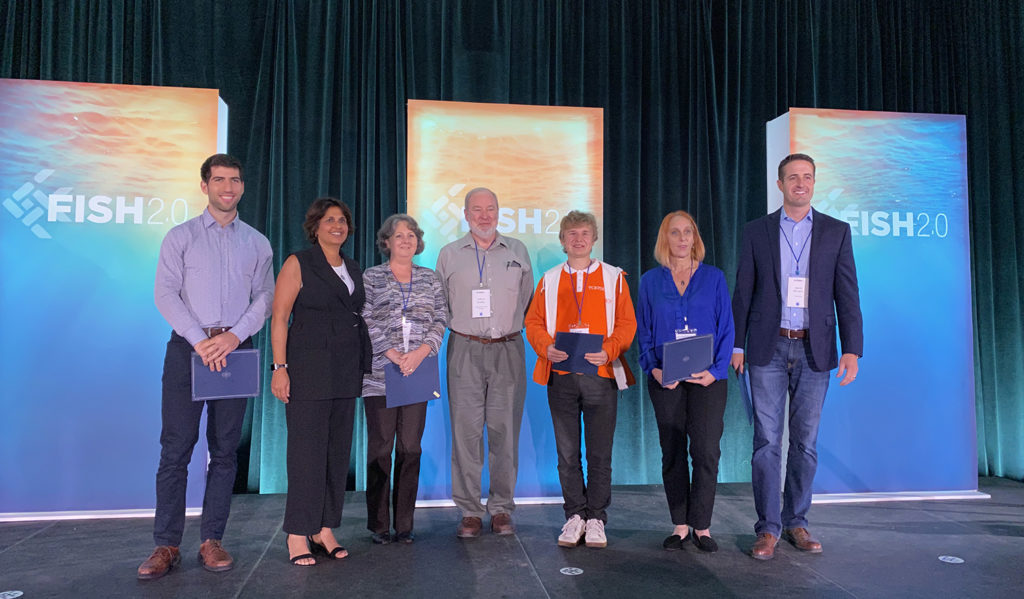
Innovation & Investment
Exit stage right: Fish 2.0 offers final set of winning innovators
Nearly 40 entrepreneurs took the stage to pitch their seafood industry-changing innovations in front of a room full of discriminating investors.
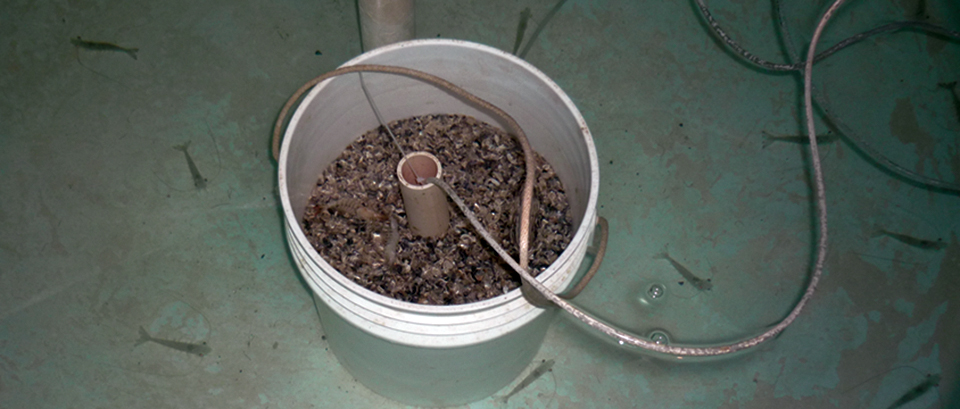
Health & Welfare
Testing finds resistance to WSSV in shrimp from Panamanian breeding program
In a challenge test under controlled conditions using a severe strain of the virus, resistance to WSSV was shown in shrimp supplied by the Camaronera de Coclé, S.A. L. vannamei genetics program.
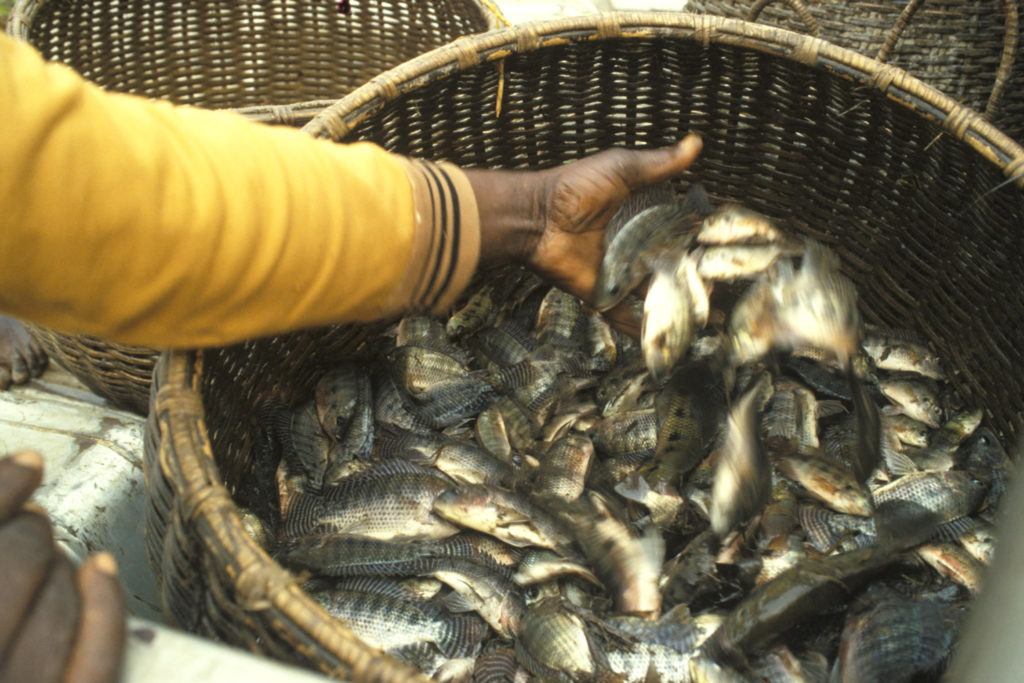
Responsibility
A helping hand to lend: UK aquaculture seeks to broaden its horizons
Aquaculture is an essential contributor to the world food security challenge, and every stakeholder has a role to play in the sector’s evolution, delegates were told at the recent Aquaculture’s Global Outlook: Embracing Internationality seminar in Edinburgh, Scotland.

Health & Welfare
A holistic management approach to EMS
Early Mortality Syndrome has devastated farmed shrimp in Asia and Latin America. With better understanding of the pathogen and the development and improvement of novel strategies, shrimp farmers are now able to better manage the disease.



